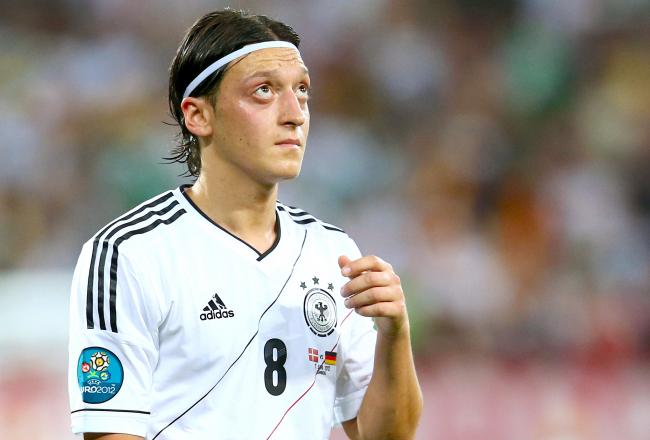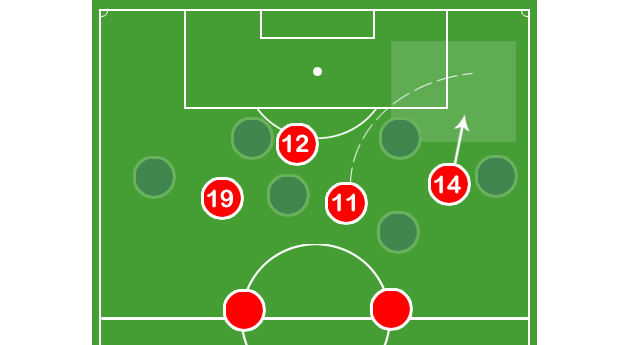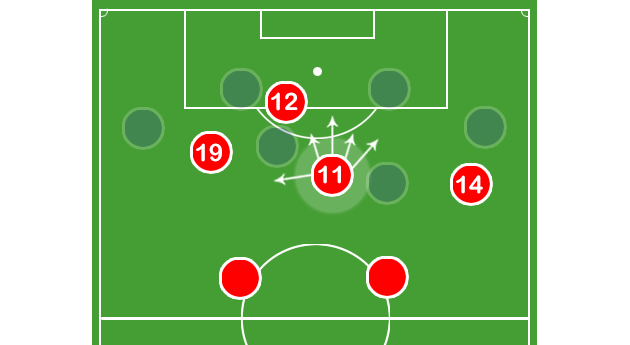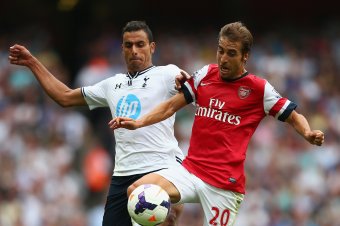Mezut Ozil Is an Exceptional Talent but Arsenal's Weaknesses Remain "SEE WHY"

Two things seem obvious about Arsenal’s signing of Mesut Ozil.
On the one hand he is an exceptional player who would strengthen just
about any team he stepped into; on the other, he is not what Arsenal
were most in need of.
Ozil will, presumably, be used as the central player in an attacking midfield line of three. Santi Cazorla will be to his left, playing quite narrow to allow Kieran Gibbs or Nacho Monreal to overlap, and looking to link with both Ozil and the holding midfielders. Theo Walcott will play wide to the right, looking to use his pace to accelerate on to diagonal through balls from Ozil.
Graphic by B/R's Sam Tighe, showing Ozil as No. 11, with Walcott as 14
Ideally, a defence faced with extreme pace would sit deep so as to deny the rapid player space to accelerate in to, but to do that is to increase the chance of Giroud meeting a cross in the penalty area; a simple way of denying a centre-forward who is strong in the air headed opportunities is to play with a higher line, but doing that enhances the danger posed by Walcott.
A big man-quick man pairing is always a dilemma for defences.
Ozil benefits either way. If a defence plays high, he comes under pressure but has plenty of room to feed passes into. If a defence sits deep, he has time and space to consider his options. Given the quality of his first touch and the instinctiveness of his vision, it may even be that he appreciates space to play passes into more than being in space himself.

Graphic by B/R's Sam Tighe, shows Ozil as Arsenal's No. 11
The most concerning of which being that, if Giroud is injured, there is no obvious replacement—unless Nicklas Bendtner’s career can somehow be resurrected. Walcott, who has admittedly expressed a desire to play centrally, and Podolski could both be used centrally, but neither is exactly a like-for-like replacement.
More significant, though, is the issue at the back of midfield. Mathueu Flamini, it’s true, adds bite and was highly effective after replacing Jack Wilshere against Tottenham, but, with Abou Diaby’s injury woes continuing, he is just about the only Arsenal midfielder who does.
 Clive Mason/Getty Images
Clive Mason/Getty Images
The pairing of Wilshere and Aaron Ramsey at the back of midfield was made to look extremely suspect positionally, exposing the lumbering Per Mertesacker against the speed of Gabriel Agbonlahor. Yet four days later the strength of the Wilshere-Ramsey duo was seen as Arsenal demolished Fenerbahce in Istanbul. The Turkish side sat deep, giving the pair time on the ball, and they responded with commanding performances, dictating the play and having a role in all three goals in a 3-0 win.
Flamini helps to alleviate that weakness, and Ozil certainly answers the fans' demand for a big-name player while also improving Arsenal as a creative force—nobody in the major five European leagues has assisted as many goals as him over the last three years—but there is a sense that, beyond the glittering frontispiece, the old weaknesses remain.
Comments
Post a Comment